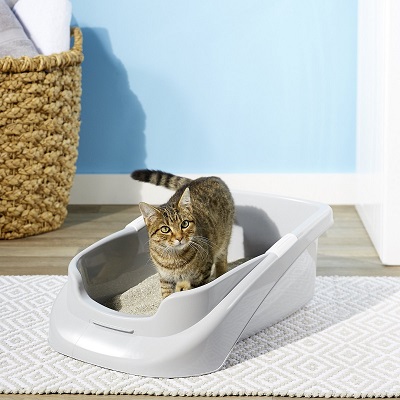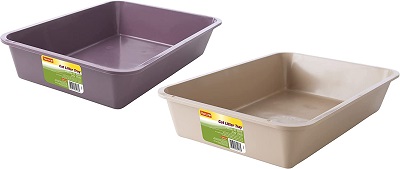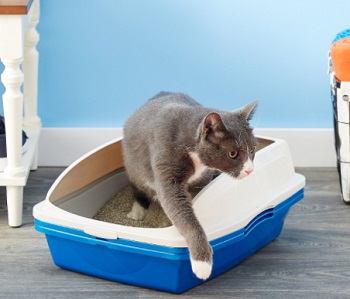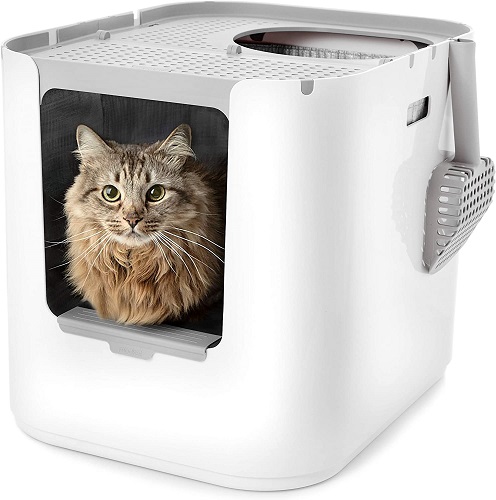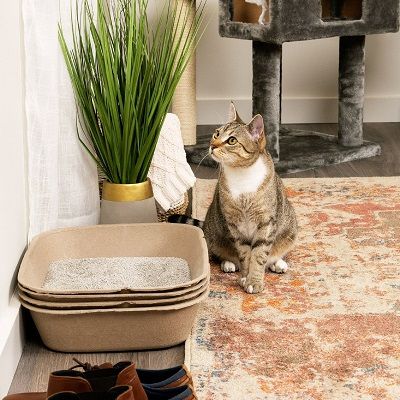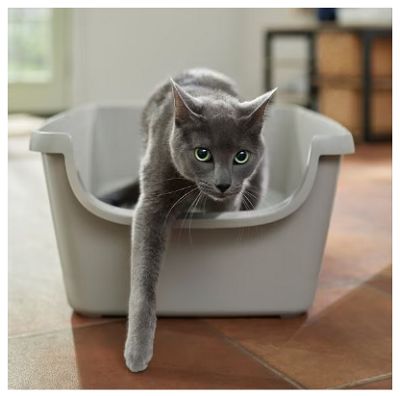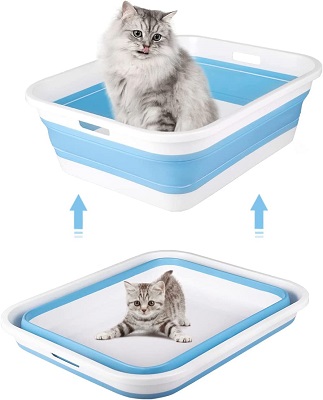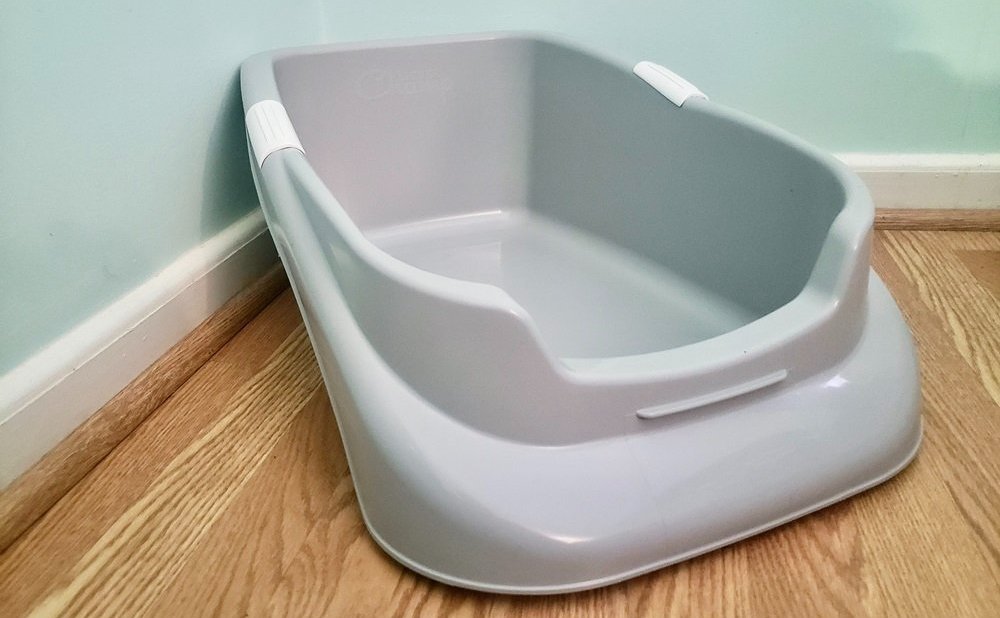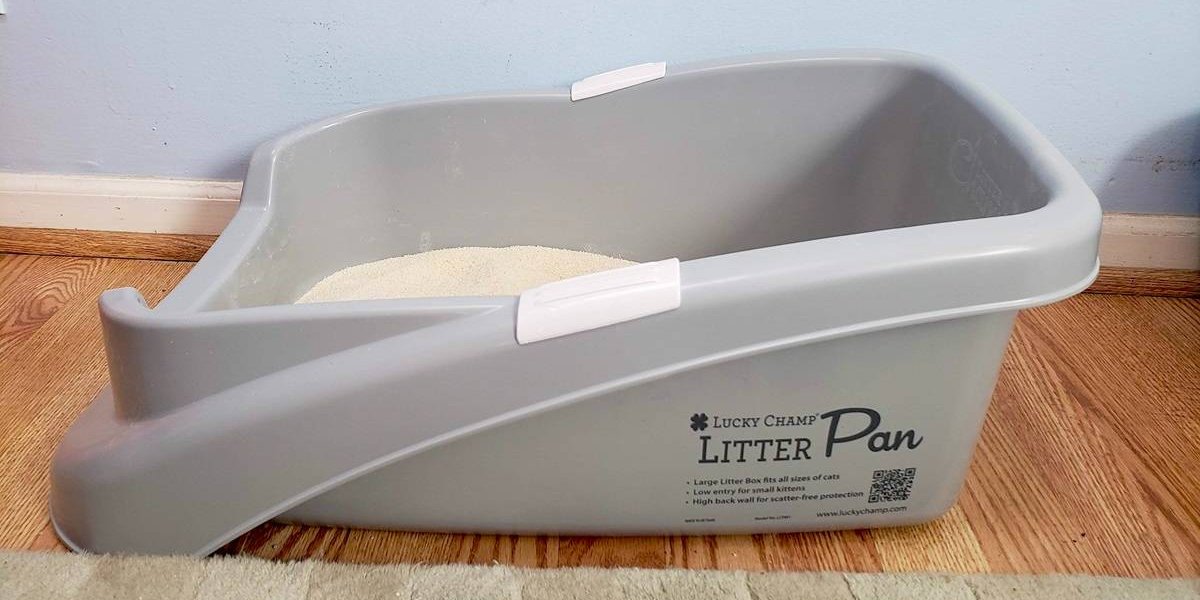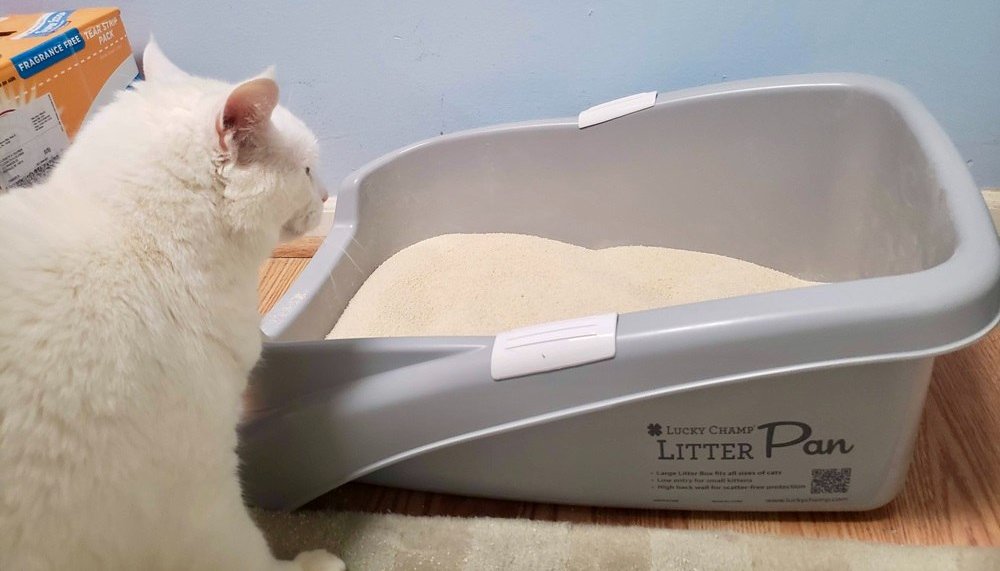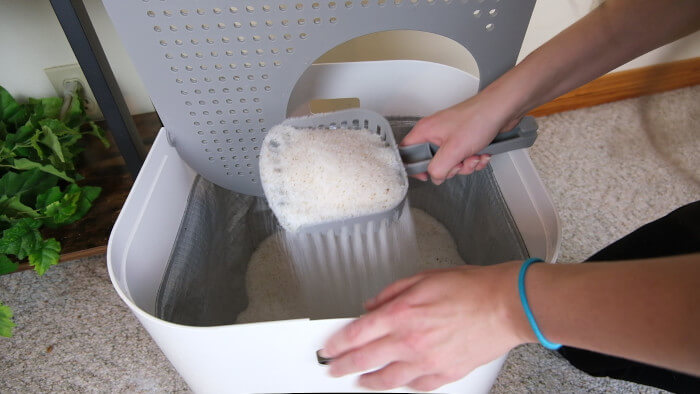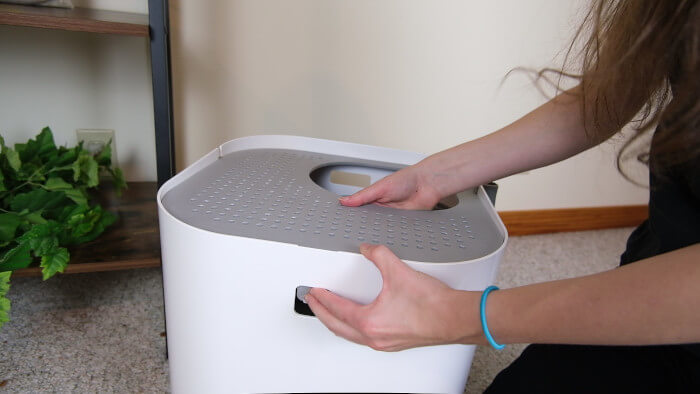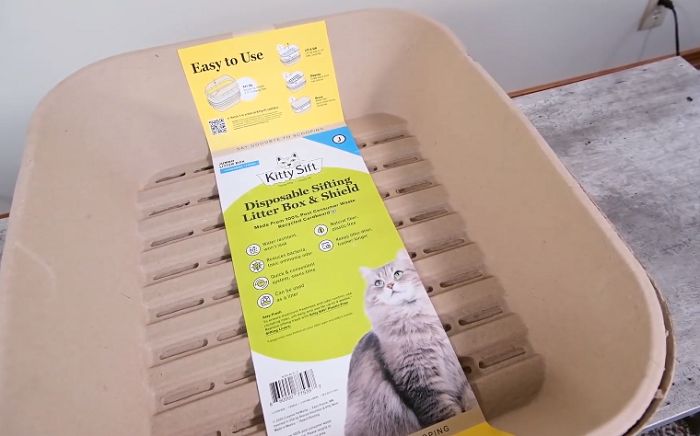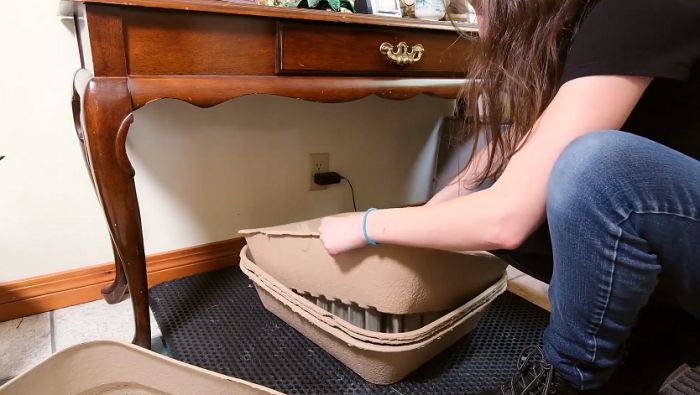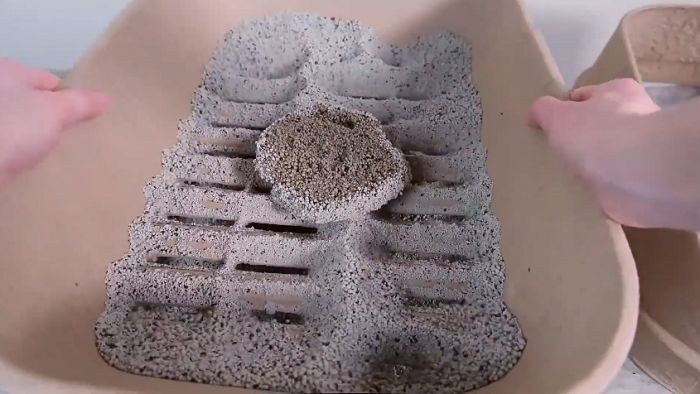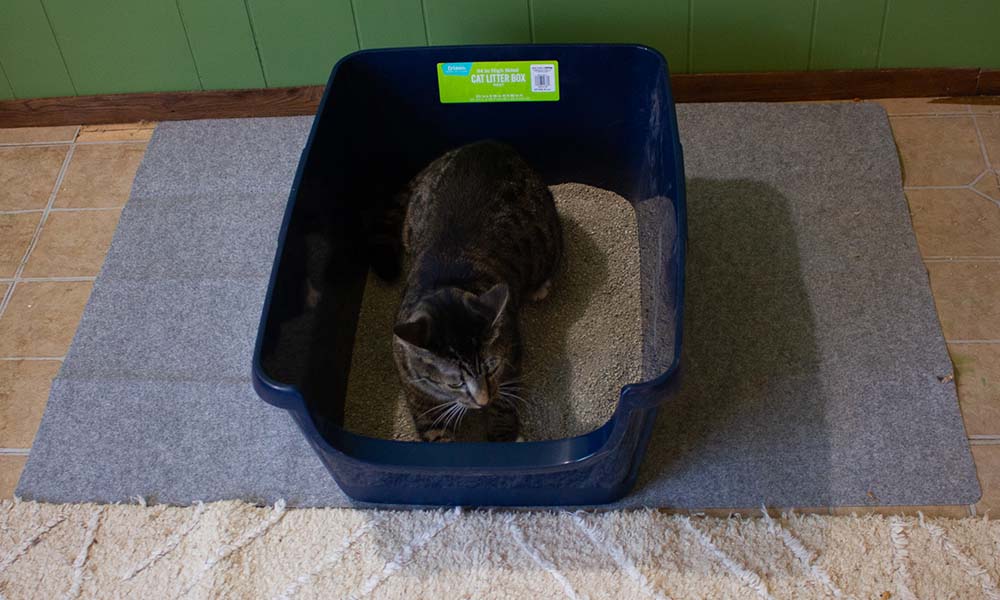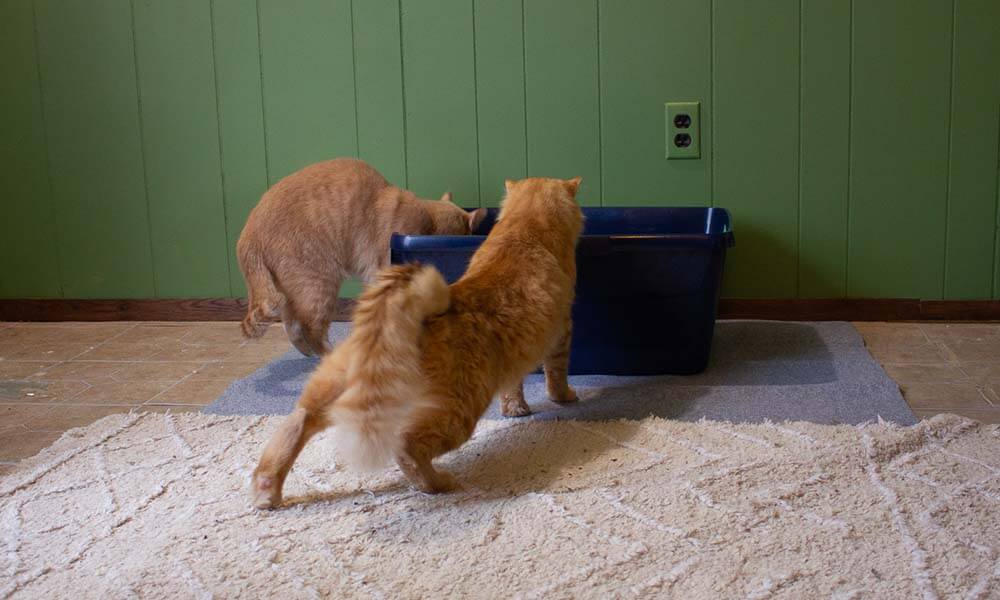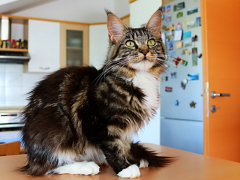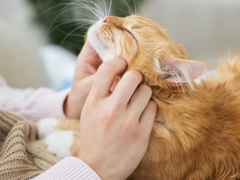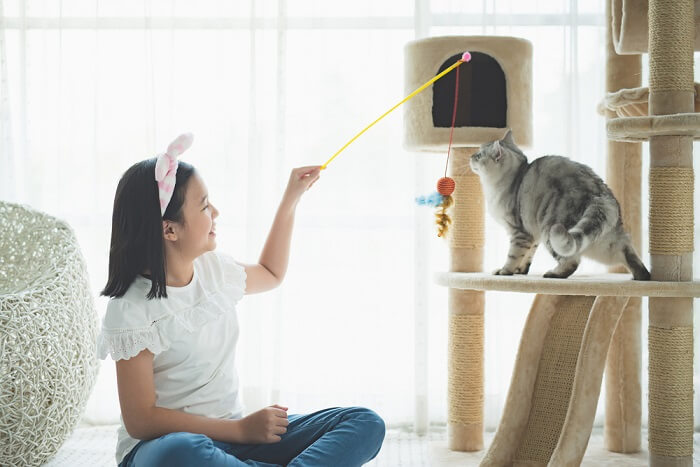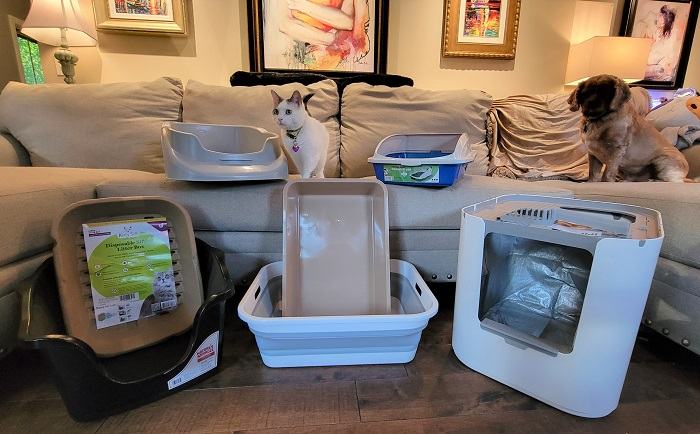
Kate Barrington / Cats.com
Bringing a new kitten home is a major adjustment for everyone involved. You can help your kitten settle in by having all the essentials on-hand.
The best litter box for a kitten is appropriately sized and easy to access. Our top pick is the Lucky Champ Cat Litter Pan, which also happens to be a great choice for senior cats. Below we’ll go into the details about this and our other favorites for kitten litter boxes.
At a Glance: 7 Best Cat Litter Boxes for Kittens




In the comparison table below, we’ve highlighted some of the most important features of each product. You’ll find more detailed information about each product later in the article.

Lucky Champ Cat Litter Pan
- Rigid plastic construction provides stability and durability
- Rubberized grips for easy lift and carry
- High back walls with a dropped entry point for easy access

Hartz Cat Litter Tray
- Multiple options for exit and entry
- Affordably priced around $13
- Good for use in crates and catios

Van Ness Large High-Sided Litter Box with Frame
- Affordably priced under $10
- Frame raises the sides of the box up to 8 inches
- Low entry sits 4.25 inches off the ground

ModKat XL Litter Box
- Versatile and adaptable with front- and top-entry options
- Included liner makes it easy to empty and clean
- Enclosed design does a good job containing litter scatter

Kitty Sift Large Disposable Sifting Litter Box
- Multi-tray sifting design for easy scooping
- Made from 100% post-consumer recycled materials
- Optional frame to help contain litter scatter

Frisco High-Sided Litter Box
- High 10-inch sides help contain litter box mess
- Generously sized for kittens who like to dig
- Affordably priced around $20

Maohegou Large Litter Box for Kittens to Senior Cats
- Adjustable height between 2.65 and 7 inches
- Sturdy construction with a solid base and top
- Fairly large, measuring 21.5-by-17.5 inches
Why Should You Trust Us?
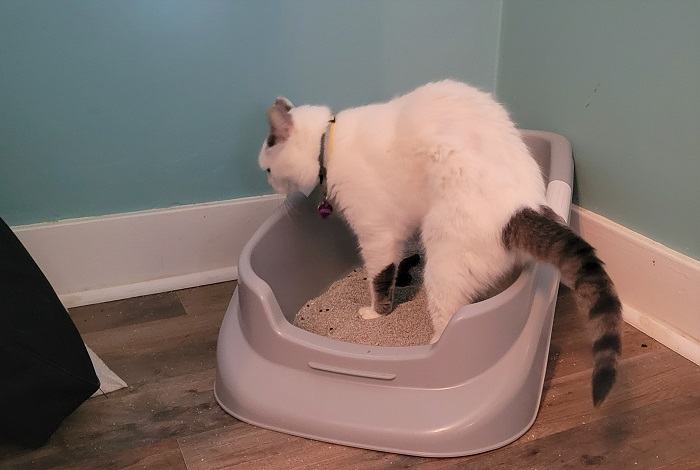
Kate Barrington / Cats.com
Over the last three years, we’ve spent a lot of time figuring out what it takes to make a great litter box.
We’ve researched the types of litter boxes available, read hundreds of customer reviews, and performed real-world tests on over a dozen top boxes. We spent over 40 hours testing these litter boxes’ sturdiness, cat-friendliness, and ability to prevent sticking and litter scatter.
In addition to research and testing, we consulted with several veterinarians to get their take on which litter boxes work best and are the most effective for cats.
Based on this extensive research and hands-on testing, we’ve selected the 7 products described below as the best boxes you can buy for kittens.
Our Veterinary Advisors
How We Picked
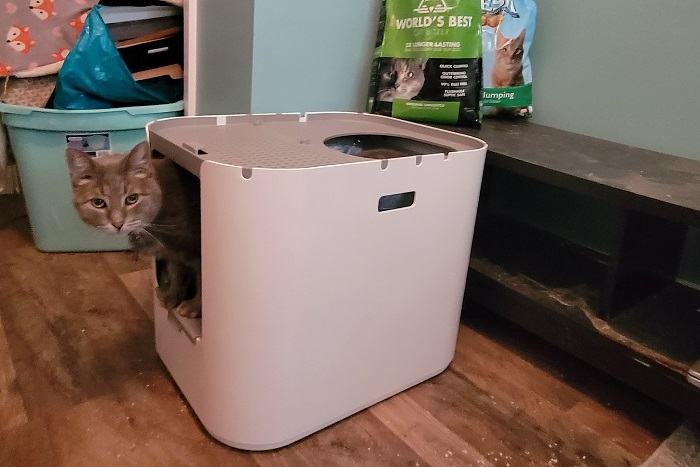
Kate Barrington / Cats.com
Over the past month, I’ve been testing more than a dozen different litter boxes with my three cats Bagel, Biscuit, and Munchkin. While none of my cats are kittens, they are all on the smaller side (under 9 pounds). Munchkin is particularly small, weighing in around 6 pounds, about what you’d expect a 6-month-old kitten to weigh.
For this round-up, I focused on litter boxes that were appropriately sized for kittens and small cats. Because kittens can be messy, I looked for litter boxes with high sides to help contain litter scatter and urine spray. Accessibility was also a major factor, so I prioritized litter boxes that had lower entries.
The Best Litter Boxes for Kittens: Our Top 7 Picks
The Top Four Things To Look For in a Litter Box for Kittens
Newborn kittens are entirely dependent on their mothers. Not only do they need her milk to stay nourished and her body heat to stay warm, but kittens are unable to eliminate without their mother’s help for the first three to four weeks. Once they can, it’s time to start litter box training.
Fortunately, kittens learn how to use the litter box from their mothers. By mimicking their mothers’ behavior and following their natural instincts, kittens generally start using the litter box fairly quickly.
If you’re adopting a kitten from a shelter, it’s likely old enough to already have litter box usage down pat. Foster kittens may need a little extra encouragement but, for most cat guardians, the primary concern is providing kitten-safe litter and a litter box that is easy for kittens to use.
Here are the top four things to look for in a litter box appropriate for kittens:
1. It Should Be Appropriately Sized for Kittens – Not Too Large.
The general rule for litter box sizing is that it should be at least as long as your cat’s length from nose to the tip of his tail (or about 1 ½ times your cat’s body length). The width of a litter box should be equal to or greater than the length of your cat’s body as well. This measurement scale is entirely impractical for kittens, however, especially considering how quickly they grow.
When your kitten is very small, it may be wise to limit the size of the litter box to encourage your kitten to use it only for its intended purpose. By the time your kitten is three months old, however, he should be using the litter box regularly and you can size up. Bigger is generally better when it comes to litter boxes, but you want to avoid overwhelming your kitten with something too large.
The average adult cat weighs between 8 and 10 pounds with a body length around 15 to 20 inches. Size and weight vary greatly, however, depending on the cat’s breeding and the same will be true for your growing kitten. Under six months, choose a litter box that is at least 12-by-12 inches but be ready to upgrade if needed. An adult cat may require a litter box closer to 24 inches long and 18 inches wide.
2. It Should Have a Low Entry Point for Easy Access.
In addition to sizing, think about the right height for your kitten’s litter box. The average litter box entry sits between 5 and 7 inches off the ground, but this might be too high for a small kitten. Look for a litter box with a dropped entry between 3 and 5 inches off the ground.
Litter boxes designed for senior cats often make a good choice for kittens. These litter boxes are specifically designed for easy access with low entry points. Just keep in mind that the lower the front of the box, the more likely your kitten is to kick litter out of it.
3. It Should Have High Sides To Help Keep Litter and Waste Contained.
While the front of your kitten’s litter box should be low for easy access, the remaining three sides should be high to help contain the mess. Cats have a natural instinct to bury their waste, but kittens can be enthusiastic when it comes to digging. To avoid having litter flung all over the floor outside the litter box, look for something with higher sides at least 6 inches high but ideally higher.
4. It Should Be Uncovered So Your Kitten Feels More Comfortable Using It.
Cats seem to largely prefer uncovered litter boxes over covered litter boxes. Your cat is constantly aware of his surroundings and likes to keep an eye on things. A covered litter box might make him feel enclosed – cut off from the world around him with limited visibility of potential threats. Covered litter boxes also limit your cat’s options for escape since the entry and exit are often one in the same.
Your kitten has these same instincts built-in, but the bigger concern is eliminating obstacles that might make your kitten anxious or uncomfortable about using the litter box. An open box he can easily climb in and out of is more kitten-friendly and may help your kitten establish good litter box habits.
Wrapping Up
As your kitten grows and matures, you’ll need to start planning for the future. You’ll want to transition your cat onto an adult cat food recipe around 10 to 12 months of age and you may need to upgrade to a larger litter box depending on your cat’s size.
Not sure what kind of litter box to choose? Don’t worry – we’ve tested dozens and have compiled a list of our favorites all in one place. Check it out here: The 11 Best Cat Litter Boxes – We Tried Them All
Frequently Asked Questions
What kind of litter is best for kittens?
Veterinarians generally recommend non-clumping litter for kittens. Clumping litter often contains additives that cause the granules to swell upon contact with moisture – this is how they form scoopable clumps.
If your kitten accidentally ingests the litter, it could cause a life-threatening intestinal blockage. Natural plant-based litters with a softer texture are also recommended because your kitten’s paws may be particularly sensitive as he gets accustomed to using the litter box.
How do you encourage a kitten to use the litter box?
If your kitten doesn’t use the litter box consistently, you may need to help him form strong habits. You can do so using the same techniques you would to housetrain a puppy. Place your kitten in the litter box after meals and after waking up from a nap – these are the times he’s most likely to have to go.
Make sure litter boxes are easy to find and access and give your kitten praise and food rewards each time they use the box. Once your kitten gets the hang of it you’ll need to phase out the food rewards but it never hurts to keep praising your cat for desired behavior.
